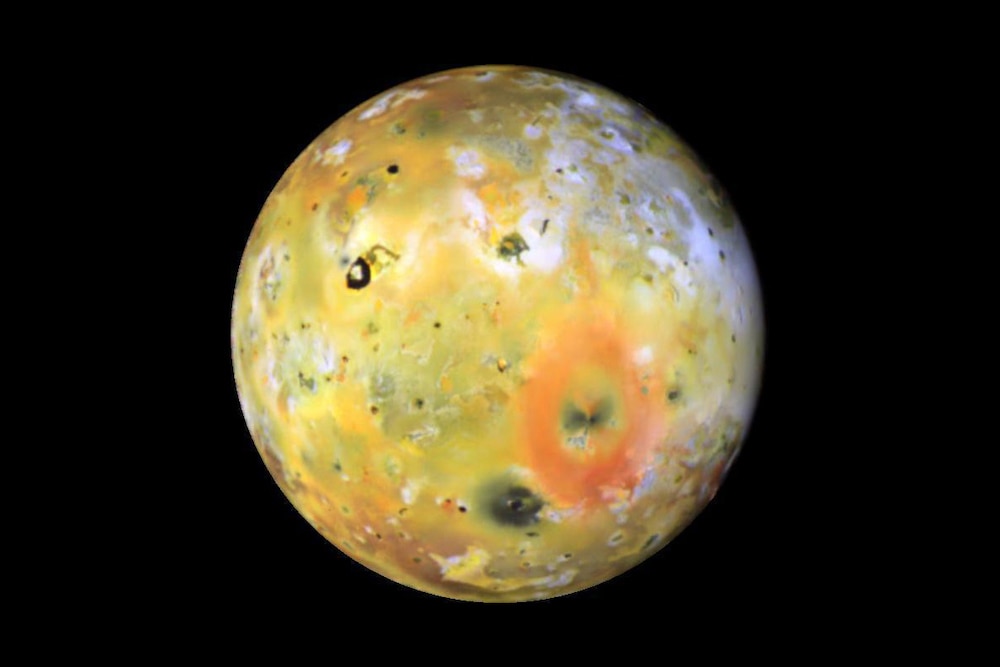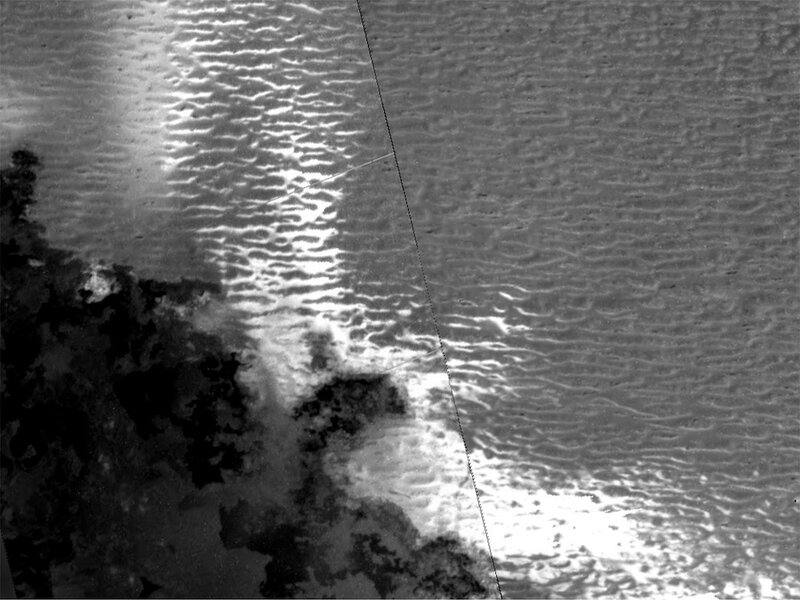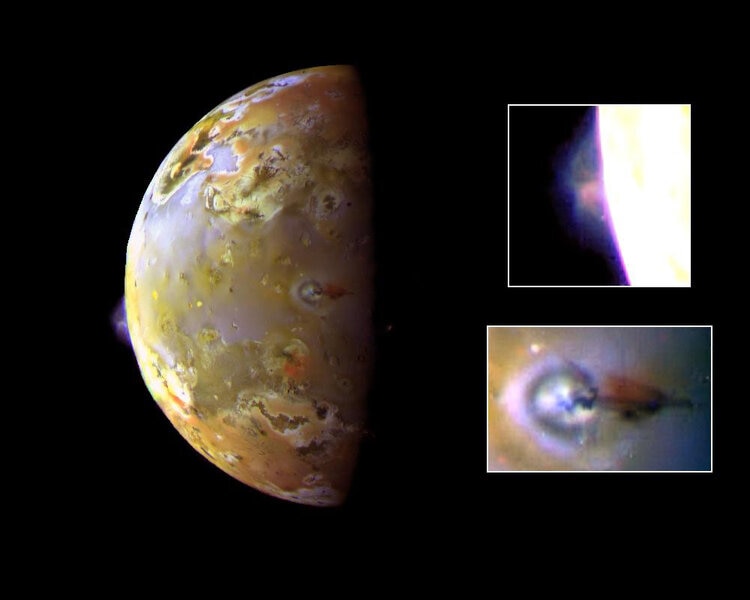Create a free profile to get unlimited access to exclusive videos, sweepstakes, and more!
Arrakis it ain’t, but Jupiter’s moon Io may create volcanic explosive steam-driven dunes
Hot lava + frozen sulfur dioxide = wind on an airless world.

Dunes are seen on a lot of solar system bodies. Earth, of course, in our deserts, but they’re also everywhere on Mars. They’ve been spotted on Venus, and even Saturn’s moon Titan.
What all those bodies have in common is grains of material to blow around to form the dunes, but also atmospheres capable of moving those grains.
So why the heck does Jupiter’s airless moon Io have dunes?
Io is the most volcanically active world in the solar system, and it’s seriously volcanic. The whole moon’s surface is covered in sulfur, erupted out from its 400 volcanoes. The element itself and the compounds it forms have colored Io yellow, orange, red, brown, and black, punctuated with the circular calderas that make it look amazingly like a 3600-km-wide pizza.
All that activity is generated by Jupiter’s immense gravity. Io’s orbit is ever so slightly elliptical, so sometimes it’s closer to Jupiter and other times farther. Gravity weakens with distance, so this change in the gravitational force — called the tidal force — squeezes and stretches Io, creating huge amounts of heat in its interior from friction. It’s enough to keep its iron-sulfur core molten, and enough to generate its tectonic mayhem. About 150 volcanoes are erupting on the moon at any one time!
This also gives Io a very tenuous sulfur atmosphere, but it’s very nearly a vacuum by Earth standards, roughly one hundred-millionth as thick as our air. You won’t get a breezy day from that.
Yet high-resolution images returned by the Galileo probe, which orbited Jupiter for nearly eight years and made many close passes of Io, show features that look very much like dunes on its surface. It’s safe to assume they’re made of grains of some sort of sulfur molecules, but how can they move and pile up without wind? Without air?
A study just published may have the answer: Hot lava belched from volcanoes hits patches of frozen sulfur dioxide and causes it to flash heat into steam. This then violently expands, creating a temporary wind as it moves across the surface, enough to push around grains on the surface [link to paper].
That’s pretty incredible. But the planetary scientists who did the work not only propose this idea but also looked at the math and physics of how this would work, and show that it can be enough to generate grain motion and sculpt dunes.
Sulfur dioxide is erupted from the volcanoes as a gas, which quickly freezes — Jupiter is 5 times farther from the Sun than Earth is, so Io’s surface temperature hovers around -160° C (about -255° F). Some spots are warmer, like near volcanoes, so there’s not as much frost there, but it still exists in subsurface patches in those areas.
The scientists looked at grains ranging from 0.1 microns to a centimeter in size — for comparison, a human hair is about 100 microns wide, so on the small end these are teeny. Normally, the gas erupting from vaporizing frost is too thin to push these around, but at higher temperatures, about -120° C (-180° F) the gas becomes turbulent and more efficient at moving the grains. It doesn’t push them along the surface so much as flick them, so they jump in little arcs. This process, called saltation, can aggregate the grains and create larger structures like dunes.
On Io, interwoven wiggly patterns that are likely dunes are seen near the lava flow from Prometheus Patera, a 28-km wide volcanic pit with flows that extend for 100 km. Brighter streaks may be evidence of sulfur dioxide frost grains that have been moved recently by the steam blasts from lava, and these patterns are consistent with dune fields seen on other solar system bodies — I’ll note that the Rosetta mission saw dune-like features on the surface of the comet 67/P Churyumov-Gerasimenko, which could be due to a similar effect when ice on the comet’s surface warmed and turned to gas, creating temporary winds on the airless body.
Our solar system may be our immediate neighborhood compared to the galaxy at large, but that doesn’t mean we’ve explored all of it; heck, we’ve barely scratched the surface of what’s out there. And as we do look at more worlds more carefully we’re bound to be surprised. Dunes on an airless moon! Will we find features like these on more moons and active objects?
I’d bet we will. After all, the grains must flow.





























